Friday, February 6th 2009

First Pictures of Intel Ibex-Peak Chip Packages Emerge
Intel's mainstream market implementation of the Nehalem architecture will come in the form of monolithic quad-core a dual-core chips that have northbridge machinery integrated. Based on the Lynnfield (quad-core) and Arandale (dual-core) designs, Intel will place the processors on a common system design dubbed the "Ibex-Peak". The processors are likely to be branded as Core i5, Core i4 or even Core i3 depending on a lot of factors. Additionally, Intel plans enterprise variants of the said chips.
To seat these chips, Intel is designing new sockets: LGA-1155, LGA-1156 the two can be classified into the sockets for the desktop variants, with another LGA-1167 socket most likely to be exclusive for the Xeon variants. PCGH sourced some images from Intel's Design Development Tools (DDT) portal (found here), which tell that Intel names its new series of sockets as "socket H". Pictured below is a processor package viewed from its business-end. The other three you can see, are interposer-boards. These are devices that resemble the actual product packages that sit on the sockets. You can see a grid of leads over the "IHS" of the package. The leads serve to help in the technical development of products based on the package design, hence it is found on the DDT portal. It should give you an idea of what an LGA-1155, LGA-1156 and LGA-1167 processor should look like, sans the leads on the IHS. The images below in the same order. Finally, pictured much earlier, is the Ibex-Peak platform motherboard that demonstrates the design.
Source:
PCGH
To seat these chips, Intel is designing new sockets: LGA-1155, LGA-1156 the two can be classified into the sockets for the desktop variants, with another LGA-1167 socket most likely to be exclusive for the Xeon variants. PCGH sourced some images from Intel's Design Development Tools (DDT) portal (found here), which tell that Intel names its new series of sockets as "socket H". Pictured below is a processor package viewed from its business-end. The other three you can see, are interposer-boards. These are devices that resemble the actual product packages that sit on the sockets. You can see a grid of leads over the "IHS" of the package. The leads serve to help in the technical development of products based on the package design, hence it is found on the DDT portal. It should give you an idea of what an LGA-1155, LGA-1156 and LGA-1167 processor should look like, sans the leads on the IHS. The images below in the same order. Finally, pictured much earlier, is the Ibex-Peak platform motherboard that demonstrates the design.
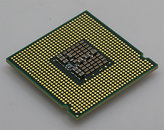
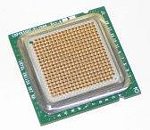
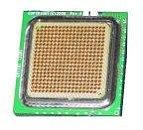
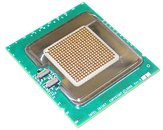
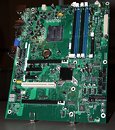
16 Comments on First Pictures of Intel Ibex-Peak Chip Packages Emerge
you stupid fools
I don't know why I act surprised because I knew this was coming. It is inevitble when you move tasks that formerly were performed on the northbridge to the CPU itself. I'll take a gander though (pure speculation)...
LGA-1155 = NB on-CPU (including GPU)
LGA-1156 = NB on-CPU (excluding GPU)
LGA-1366 = QPI Single-Way (and Two-Way)
LGA-1567 = QPI Four-Way
LGA1567 is for MP xeons. Even DP xeons will only use LGA1366.
Also note LGA1156 uses VRD 11.1 (same as 1366). LGA1155 uses VRD 12.
Come on guys - a different retarded socket for every cpu variant? is it 1993 again already?
They say history repeats it's self...
Or perhaps Rome simply LIKES falling?
The new sockets are most likely due to the return to a NetBurst-esque architecture. I suspect the sockets being introduced now will last until the next NetBurst-esque architecture which is 4-6 years off if things go as expected.
LGA-1155 = NB on-CPU (including GPU) - think nehalem based atom or mini ITX. even full size laptops.
LGA-1156 = NB on-CPU (excluding GPU) - standard consumer systems
LGA-1366 = QPI Single-Way (and Two-Way) tri-channel, SLI, crossfire - enthusiast
LGA-1567 = QPI Four-Way - server
so really, its only two sockets for the consumer market. its not as confusing as it seems.
As some have said above, this is just crazy. LGA775 was such a hit because of its long life and easy upgrades but this is just nuts. Good thing AMD is sticking with just Am2+/Am3.
LGA1366 has so many more pins because a. it has triple channel (pins for the 3rd channel) b. a 2nd QPI link for DP Xeons. Stuff that's not needed on core i3/4/5. You end up paying more if they just use the 1366 socket, but with a whole lot of pins disabled (more $ to manufacture).
Those using core i7 will get their own line to upgrade to, core i5 will not exceed core i7 in performance. Those with core i7 will probably not downgrade to a core i3/4/5.
Whereas those who will go mainstream core i3/4/5 have CPUs all the way up to the performance market segment to play with (the same segment/price as i7 940).
So really, in a desktop user sense, unless you need triple channel, or need to run more than 2 cards in crossfire/SLI... a core i3/4/5 will be sufficient and would give you plenty of room to upgrade CPUs up to the $500 USD mark.
The mobile socket - you'll never find it on a desktop or in a server. It is a socket for its own separate market. Mobile sockets have always been different to desktop/server sockets.
This would mean different power planes may be needed etc. hence the new VRD.
i also think people are missing the fact 1155 INCLUDES A GPU ON THE CPU.
its for all in one boxes ONLY.
All those computers will have is a south bridge with the HDD control, audio controller, legacy chip (FDD, PS/2, PATA), and PCI bus for expansion slots. The primary reason for moving the north bridge on to the CPU is to substantially reduce power requirements.